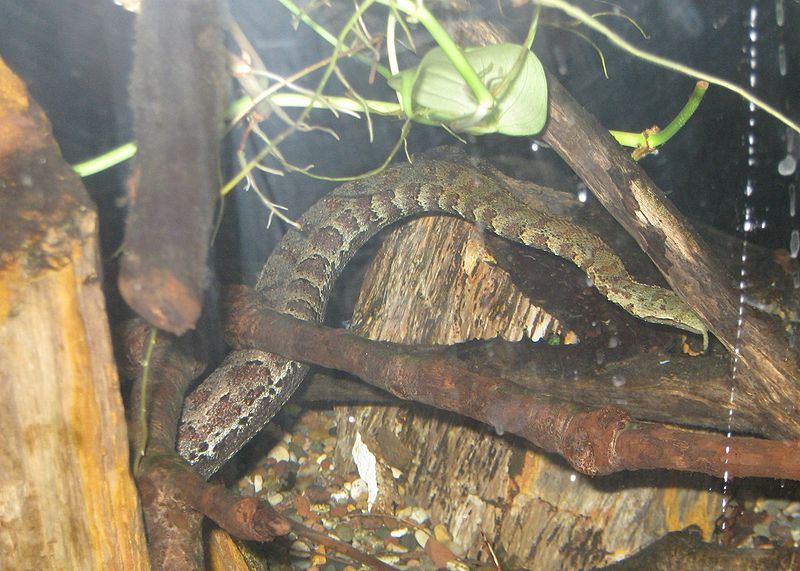There's an old wives tale that snakes hypnotise their prey, but a new study has revealed even more amazing - but real - goings-on in the snake world. Tentacled snakes (Erpaton tentaculatum) have evolved an astonishing way of tricking small fish into swimming right into their mouths. Kenneth Catania from Vanderbilt University in Tennessee in the US has uncovered how the snakes confuse the fish into swimming towards instead of away from them. The fish's reaction is so predictable that the snake aims at the spot the fish will arrive at, instead of tracking the actual movement of the fish.
These are most peculiar snakes, a type of mud snake, that have a pair of moveable tentacles on the end of their noses, the only reptiles in the world to have such a structure. They live in freshwater rivers and streams and in brackish water in Southeast Asia and when they are hunting they lie in wait motionless curling their body into a characteristic J-shape with their heads bent around in a hook.
 When a fish approaches, the snake lunges into action, striking out ballistically in only 15-20 milliseconds. But the fish have evolved a specialised escape mechanism that is even quicker. They detect ripples of pressure in their ears on each side of their body. When one ear picks up a pressure wave an automatic reflex signal is sent to the muscles on one side of its body, which contract causing the fish up into a C shape: scientists have called this the C-start. With their heads turned round, the fish then swims extremely rapidly away from the source of the sound, in a movement that can't be reversed once it has begun.
When a fish approaches, the snake lunges into action, striking out ballistically in only 15-20 milliseconds. But the fish have evolved a specialised escape mechanism that is even quicker. They detect ripples of pressure in their ears on each side of their body. When one ear picks up a pressure wave an automatic reflex signal is sent to the muscles on one side of its body, which contract causing the fish up into a C shape: scientists have called this the C-start. With their heads turned round, the fish then swims extremely rapidly away from the source of the sound, in a movement that can't be reversed once it has begun.
In his paper in the journal PNAS, Catania describes how he began watching snakes hunting in slow motion (on high speed cameras of up to 2000 frames per second) and discovered that instead of swimming away, the fish (fathead minnows) kept on swimming right into the jaws of the predator. Out of 120 trials he recorded on camera with 4 different snakes, 78% of the time the fish turned towards instead of away from the snake.
He also noticed that before the snake moves its head, it twitches a point slightly further down its body. Using a hydrophone he picked up a sound wave this motion produced.
So the snakes have co-opted the fishes' reflex escape response, deliberately making a sound comes from the other side to their heads, triggering the C-start response in the wrong direction - the fish swim towards instead of away from the snake, and all in super-quick time that a human observer can barely detect.
Even more extraordinary is Catania's discovery that instead of aiming at the fish and tracking it's movement as it swims away - as most predators do - the tentacled snakes head directly for the spot where it expects the fish to end up if they initiated a C-start towards the head.
The next thing Catania wants to find out is whether the snakes' predictive ability is hard-wired or whether they learn it. He hopes to find some baby snakes just after they have hatched and carry out the same video analysis of their first attempts to catch their dinner.
- Previous Underground oceans on Enceladus?
- Next Size does matter










Comments
Add a comment